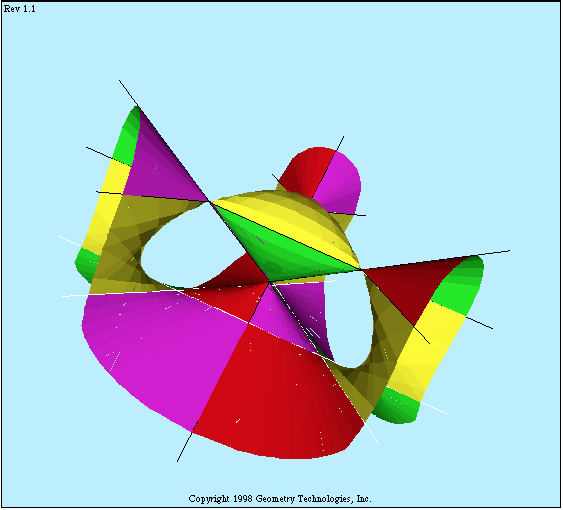The equation of the Cayley surface
This page is dedicated in memory of my friend Sevín Recillas,
who got me interested in this surface.
|
Scroll down to the discussion of the implicit equation. |

|
Viewing suggestion:
If your browser is java-enabled, I recommend that you visit one of the JGV links to view the interactive figure. You can view that figure from different directions by dragging it with the mouse. |
Static views:
|
The implicit equation and lines on the surface:
We find six lines on the Cayley surface by studying
its intersections with the coordinate planes. For instance,
the intersection of the Cayley surface with the plane
w = 0 satisfies the equations
w = xyz = 0. Therefore, this intersection
is the union of the following three lines:
We find three additional lines on the Cayley surface by
studying the intersection of the surface with the plane
w + x + y + z = 0.
Choosing two variables, for instance w and x,
we can re-write the standard equation as follows:
We have now found 9 lines on the Cayley surface. Click here to see an explanation of why there are no other lines on this surface. |